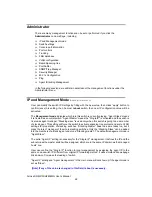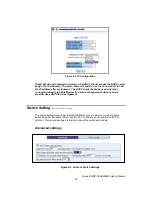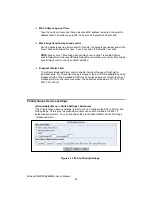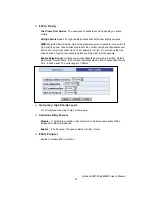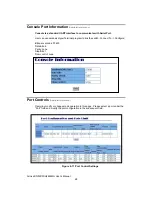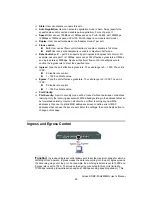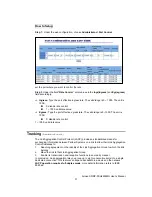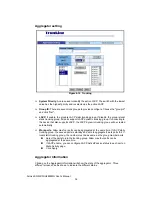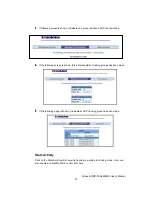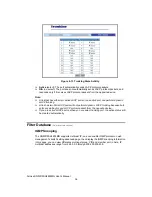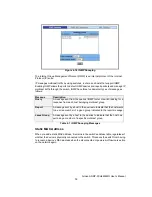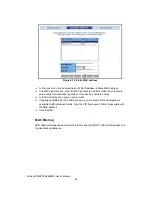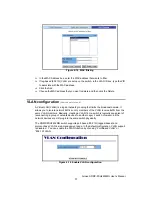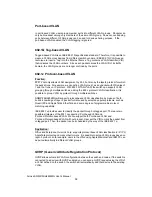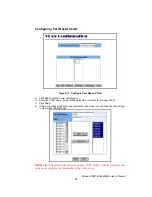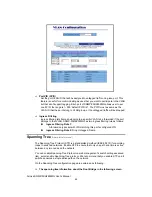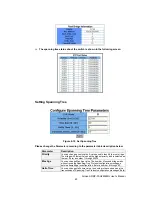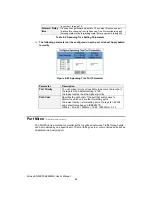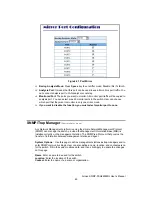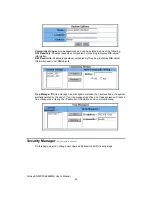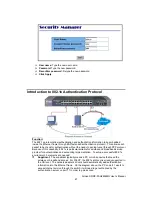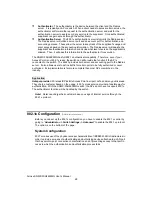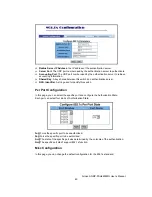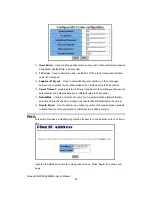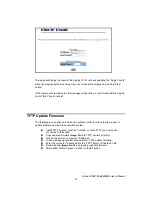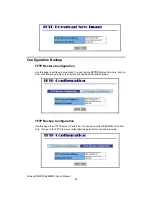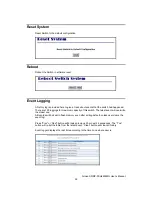
AirLive SNMP-FSH2602MG User’s Manual
38
Port-based VLAN
In port-based VLAN, users group member ports into different VLAN groups. Packets can
only be broadcast among only members of the same VLAN group. However, overlapping
ports between different VLAN groups can be used for device sharing purpose. If the
port-based VLAN enabled, the VLAN-tagging is ignored.
802.1Q Tag-based VLAN
Tagged-based VLAN is an IEEE 802.1Q specification standard. Therefore, it is possible to
create a VLAN across devices from different switch venders. IEEE 802.1Q VLAN uses a
technique to insert a “tag” into the Ethernet frames. Tag contains a VLAN Identifier (VID)
that indicates the VLAN numbers. Since each packet carries the VLAN ID of its traffic
domain, the VLAN groups are no longer confined by the ports.
802.1v Protocol-based VLAN
Function
:
802.1v not only allows VLAN assignment by Port, but also by the layer3 protocol for which
the packet runs. For example, we can define VLAN group 1 as any packet with VID value of
1 and that runs on IP protocol. With 802.1Q TAG VLAN, the switch can support VLAN
grouping through multiple switches, adding the 802.v protocol VLAN classification, it is
possible to group VLAN by protocol through multiple switches
SNMP-FSH2602MG will support protocol-based VLAN classification by means of both
built-in knowledge of layer 2 packet formats used by selected popular protocols, such as
Novell IPX and AppleTalk’s EtherTalk, and some degree of programmable protocol
matching capability.
IEEE 802.1v provides user to classify the packet through untagged port. There are two
possible strategies of the 802.1v supporting: Port-based VLAN and
Port-and-Protocol-based VLAN. We can support both Port-based VLAN and
Port-and-Protocol-based VLAN with our product. User set the VID to mark the packet from
untagged port. Then, the packet can be scheduled by the way of the IEEE 802.1q.
Application
:
Office and Enterprise: OvisLink Corp. supports protocol base VLAN classification in IP, IPX,
AppleTalk protocols and many other formats. It is possible to setup VLAN groups based on
layer-3 protocol, so far example, users in the office using Apple Macintosh and IBM PC can
be put automatically in different VLAN groups.
GVRP (Generic Attribute Registration Protocol)
GVRP allows automatic VLAN configuration between the switch and nodes. If the switch is
connected to a device with GVRP enabled, you can send a GVRP request using the VID of
a VLAN defined on the switch, the switch will automatically add that device to the existing
VLAN.

